Thyroid and Temperature: How Body Temperature is Affected by Thyroid Hormone
Researchers have discovered how thyroid hormone affects blood vessels to determine body temperature, potentially explaining why people with thyroid disorders have higher sensitivity to environmental temperature. An overactive thyroid can cause feeling too hot, while an underactive thyroid can cause feeling too cold.
Thyroid Hormone and Body Temperature Regulation
Researchers from the Karolinska Institutet in Sweden have unveiled how thyroid hormone affects blood vessels to determine body temperature. This finding may explain why individuals with thyroid disorders often experience heightened sensitivity to environmental temperature. An overactive thyroid (hyperthyroidism) can lead to a person feeling overly hot, while an underactive thyroid (hypothyroidism) can result in feeling excessively cold.
The Role of Thyroid Hormone in Vascular Function
Previous studies have attributed the temperature sensitivity in thyroid disorders to the effects of thyroid hormone on cellular metabolism. However, the current research suggests that thyroid hormone’s influence on the dilation of blood vessels is a key factor in regulating body temperature.

Studying Thyroid Hormone Receptor Mutations in Mice
For the study, published in the Proceedings of the National Academy of Sciences, the researchers investigated mice with a mutated thyroid hormone receptor called TRalpha 1. This specific mutation only affects certain tissues, including the central nervous system, bone, and all muscle types, making it easier to study specific aspects of thyroid dysfunction while other factors remain normal.
Paradoxical Findings in “Hypothyroid” Mice
Surprisingly, the mice with the TRalpha 1 mutation displayed an overactive metabolism, contrary to what would be expected in hypothyroidism. The researchers were perplexed by this paradox and sought to uncover the underlying reason.
Impaired Vascular Regulation and Heat Dissipation
Infrared imaging revealed that the mutated mice were losing a significant amount of heat through their tails. This indicated that the mice were unable to properly regulate the constriction of their blood vessels, a key mechanism for temperature regulation.
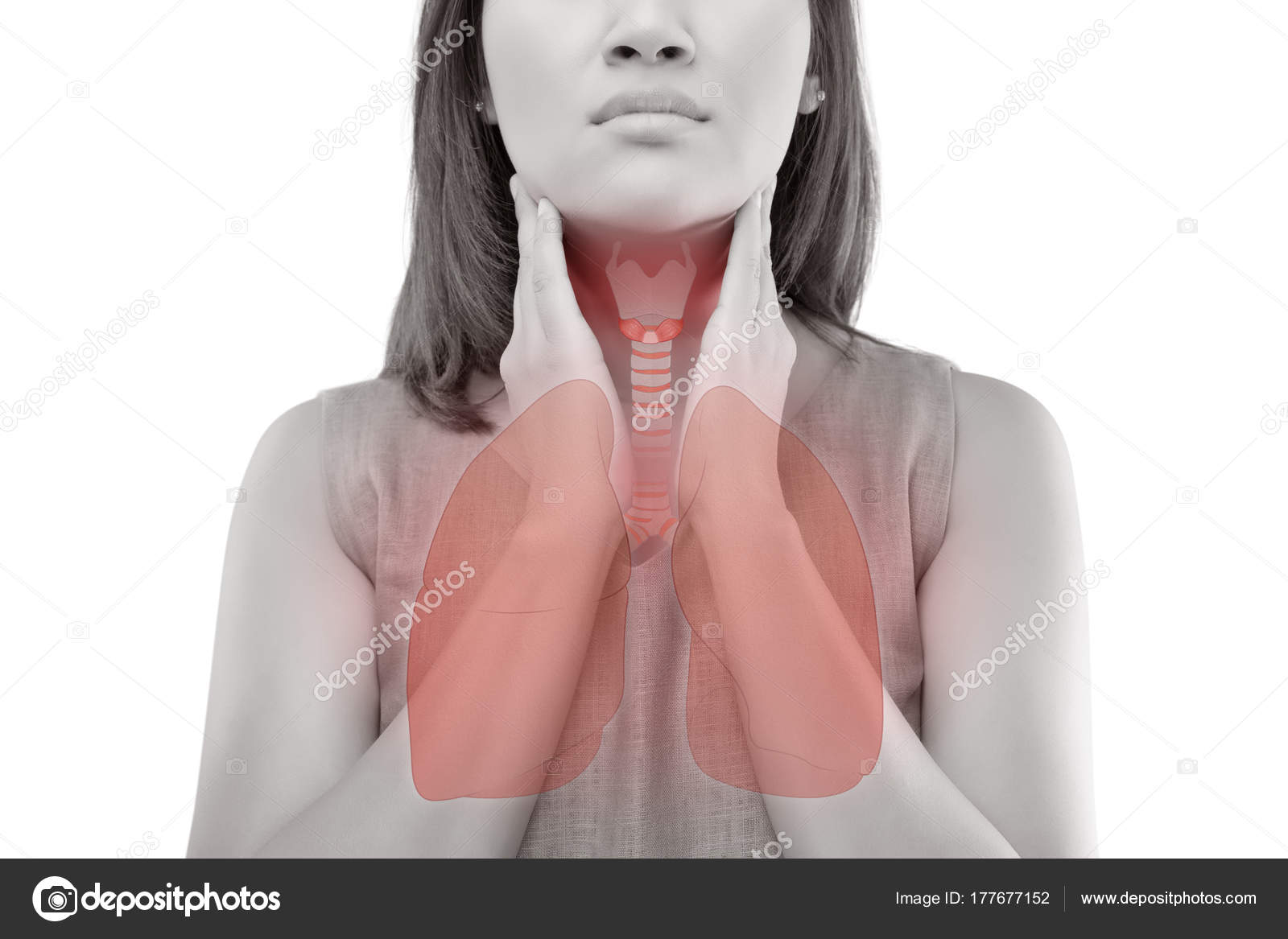
Restoring Vascular Function and Normalizing Metabolism
When the researchers administered a drug (midodrine) to artificially constrict the blood vessels, they found that this reversed the heat loss from the tail, allowing the mice to maintain a normal body temperature. Consequently, the activation of the energy-consuming brown fat was “turned off,” and the elevated metabolism was normalized.
Implications for Thyroid Disorder Patients
The findings of this study suggest that thyroid hormone’s role in vascular control of body temperature may be of particular importance, going beyond the well-established effects on basal metabolic rate. This discovery opens up the possibility of exploring new treatment approaches for thyroid patients who suffer significantly from temperature sensitivity.
Dr. Amy Warner, the lead researcher, emphasized the significance of understanding all the potential consequences of thyroid hormone disorders for comprehensive patient care. The team plans to conduct further research to elucidate the precise mechanisms behind the smooth muscle’s impaired response in regulating body temperature.

Additionally, the researchers aim to explore the potential use of infrared thermography in humans to assess heat dissipation differences between euthyroid (normal thyroid function) and various thyroid conditions.
Conclusion
This study provides a new perspective on the relationship between thyroid hormone and body temperature regulation. By uncovering the role of thyroid hormone in vascular function, the researchers have shed light on a previously overlooked mechanism that contributes to the temperature sensitivity experienced by individuals with thyroid disorders. These findings have the potential to pave the way for improved management and treatment options for patients struggling with this debilitating symptom.
How body temperature is affected by thyroid hormone
Researchers say they have discovered how thyroid hormone affects blood vessels to determine body temperature, potentially explaining why people who have disorders of the thyroid gland have higher sensitivity to environmental temperature.
An overactive thyroid (hyperthyroidism) can cause a person to feel too hot, while an underactive thyroid (hypothyroidism) can cause a person to feel too cold.
The researchers from the Karolinska Institutet in Sweden said that previous studies have attributed this to how thyroid hormone affects the metabolism within cells.
The thyroid produces hormones that are able to influence how much the blood vessels dilate. In turn, this affects how much heat can escape the body.
For the study, published in the Proceedings of the National Academy of Sciences, the researchers studied mice with a mutated thyroid hormone receptor (receptor-mediated hypothyroidism). This particular mutation only affects one type of hormone receptor called TRalpha 1.
This particular mutation only affects one type of hormone receptor called TRalpha 1.
According to the researchers, TRalpha 1 is only expressed in certain tissues, and the mutation makes the tissue unresponsive to thyroid hormone, particularly in the central nervous system, bone and all muscle types.
Dr. Amy Warner, researcher at the Department of Cell and Molecular Biology at the Karolinska Institutet, told Medical News Today:
“This makes it easier to study certain aspects of thyroid dysfunction, while others remain normal. It’s well known that thyroid hormone drives up basal metabolic rate, by affecting how quickly cells metabolize, and hypothyroidism should therefore show the opposite.”
Previous studies have shown that mice with this defect had an overactive metabolism, caused by the energy needed to generate heat from brown fat.
“When our supposedly hypothyroid mice showed an increase in metabolism and were burning energy through activating their brown fat, we were confused by this paradox and wanted to find out why this occurred,” Dr.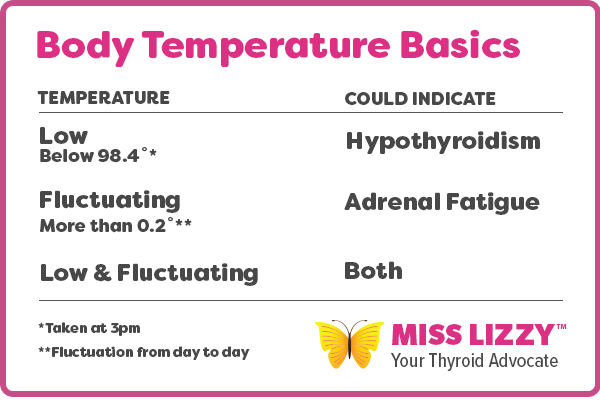 Warner added.
Warner added.
The researchers took infrared images of the mice, which revealed that they were losing a significant amount of heat through their tails. This showed that the mutated thyroid hormone receptor meant the mice were unable to sufficiently regulate the constriction of their blood vessels.
Dr. Warner explained the findings to Medical News Today:
“Mice with a non-functioning TRalpha 1 receptor cannot properly regulate their body temperature, and this is due to impaired control of their blood vessels, in areas where they are used for temperature regulation, such as the tail.”
She continued:
“Shown through infrared imaging, at room temperature, the tail blood vessels do not constrict properly, and too much heat is lost. The mice cannot defend their body temperature correctly, and therefore need to generate heat from their brown fat to keep warm. Activation of brown fat requires an increase in energy demands to maintain, hence why these mice have a higher metabolism, despite being hypothyroid. ”
”
When the researchers gave the mice a drug (midodrine) to artificially cause vascular constriction, they found that this reversed the heat loss from the tail, meaning the mice could maintain normal body temperature, and activation of the brown fat was “turned off.”
“Oxygen consumption and food intake were also normalized, meaning that the increased metabolism in these mice was due to the energy demands of the brown fat, not a consequence of the mutation itself,” Dr. Warner added.
“By looking at the function of isolated smooth muscle from tail artery, we know that (sympathetic) signal from the brain to the tail is intact in these mice, and the defect is within the smooth muscle itself.”
Dr. Warner said that until now, temperature sensitivity as a result of thyroid disorders has been attributed solely to the basal metabolic rate effects of too much or too little thyroid hormone.
“However, this study shows that thyroid hormone’s role in the vascular control of body temperature may be of particular importance,” she added.
Dr. Warner noted that the findings of this study may open up the possibility to treat thyroid patients who find their temperature sensitivity to be significantly detrimental to their quality of life.
“Similarly, having a better understanding of all the conceivable consequences of thyroid hormone disorders is important for comprehensive patient care.”
Dr. Warner said that the team would like to carry out further research in order to determine exactly why the smooth muscle does not respond correctly in the mice to regulate their body temperature.
She added: “We’d also like to see the use of infrared thermography extended to humans, to see if any heat dissipation differences can be seen between euthyroid and different thyroid conditions.”
How Thyroid Maintains Body Temperature?
How Thyroid Maintains Body Temperature?
Created On
Dec 07 2020
Last Updated
Feb 21 2023
This summary includes research published in peer-reviewed journals including Frontiers in Bioscience, Archives of Internal Medicine, Physiological Reviews, and more.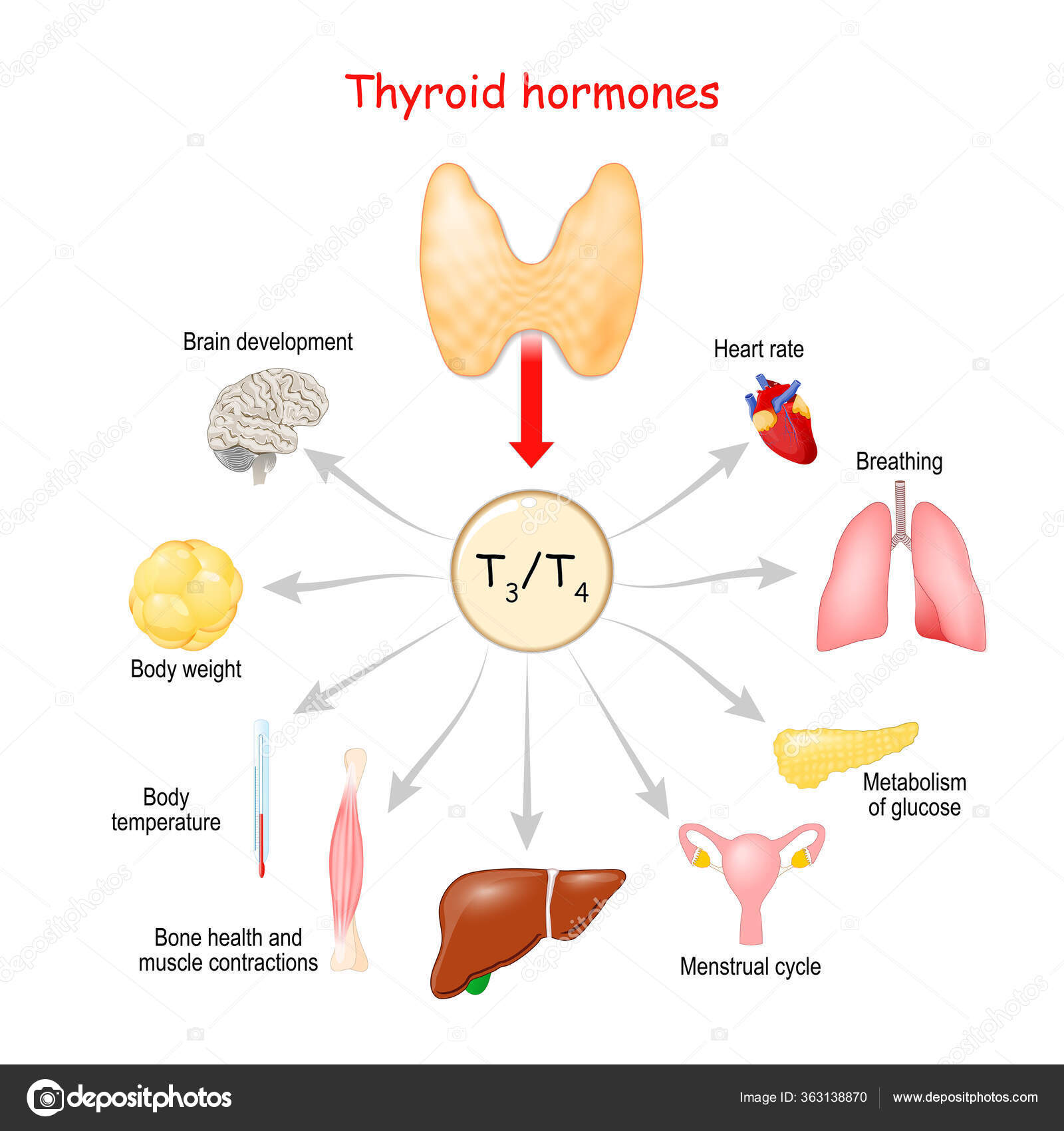
We humans differ from animals and birds in a unique way: we can maintain a constant body temperature and don’t require hibernation or migration to warmer climates.
As simple as this may sound, maintaining body temperature has taken millions of years to evolve.
Beyond a certain amount of heat generated from metabolism, this requires a system that can generate additional heat in order to raise body temperature (e.g., to 37° C for humans, 42° C for birds).
Fighting Cold
During cold, as outside temperature drops, blood vessels shrink to reduce heat loss and people curl up like a sphere, to minimize the exposed area of the body (sphere has minimum surface area for a given size).
In parallel, the body starts generating heat. At first through shivering, but then the baseline metabolic rate increases. Over time, the brown fat deposited around vital organs such as kidney, spinal cord and blood vessels starts to generate enough heat to raise the body temperature.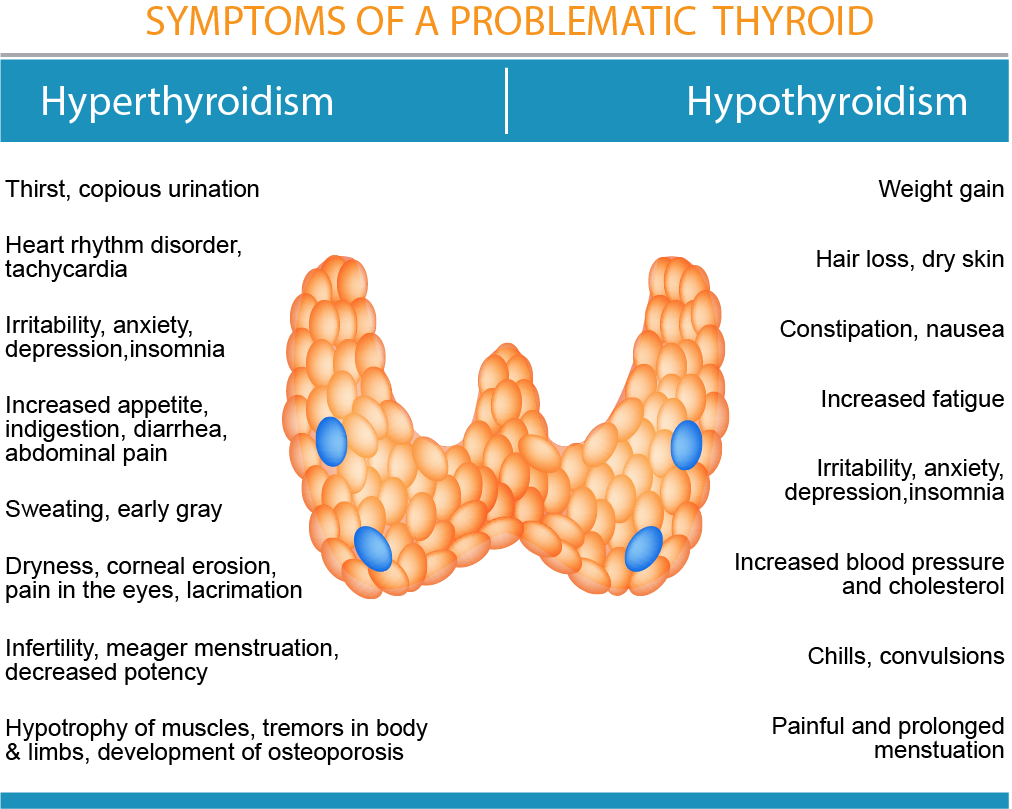
What if the outside temperature is too high?
We have developed unique processes to dissipate heat and lower the body temperature. Sweating to cool down, and slowing down of certain biological processes to reduce heat generated in the body are just few examples. (That’s one reason why people eat spicy food in hot climates, because it increases sweating, which cools the body.)
Metabolic Rate
The baseline metabolic rate, or BMR, is the lowest amount of energy necessary to stay alive. This would ideally be the minimum energy our body needs.
It is measured at rest, after a meal, and at ambient temperature when no work is needed to heat or cool the body in response to outside temperature fluctuations.
Since we often live indoor at 20-25° C, our body is constantly burning stored fat to keep the temperature at 37° C.
In animals that live in cold environments, more body heat is necessary to maintain the temperature. It comes from a higher baseline metabolic rate and constant heat generated from the stored fat.
The baseline metabolic rate—sometimes also called, resting energy expenditure—depends on size, genetics, and many other factors including age, pregnancy, and gender.
Role of Thyroid Hormones
Thyroid is one of the main knobs to maintain a tightly controlled temperature around a 37° C (or 98.6° F). Even birds and other mammals use thyroid hormones to balance their body temperature.
During cold, thyroid hormones, T4 and T3 will stimulate the body to generate more heat.
In hot weather, when outside temperature rises above our body temperature, the release of TSH slows down. T4 and T3 already circulating in the blood lose an iodine atom and convert into non-active forms, e.g., T4 into reverse T3 (rT3).
What happens if the system malfunctions and the body continues to produce thyroid hormones?
Hyperthyroidism is such a condition when excess thyroid hormone, T4, circulates in the blood. As a consequence, the body constantly struggles to lower the temperature. This results in common symptoms of fatigue, high sensitivity of heat, irritation, and weight loss.
This results in common symptoms of fatigue, high sensitivity of heat, irritation, and weight loss.
On the other hand, in hypothyroidism, our body can not supply enough thyroid hormones to maintain the temperature. A typical symptom is continuous feeling of cold.
Initially, TSH levels rise (or drop) to maintain sufficient T4 and T3 levels. However, beyond a certain level when TSH levels saturate (or bottom out), the system malfunctions, resulting in a thyroid disorder.
Thyroid and Body Fat
The so called brown adipose tissue—the brown fat distributed around key organs such as liver, heart, kidneys, etc.—is one of the key players in maintaining body temperature. On exposure to cold, these BAT cells generate the necessary heat to raise the temperature.
In hypermetabolic state—in hyperthyroidism—resting energy spending increases, people lose weight, their cholesterol levels drop, brown and white fat burning increases, and a higher blood sugar appears. These processes reverse in case of hypothyroidism.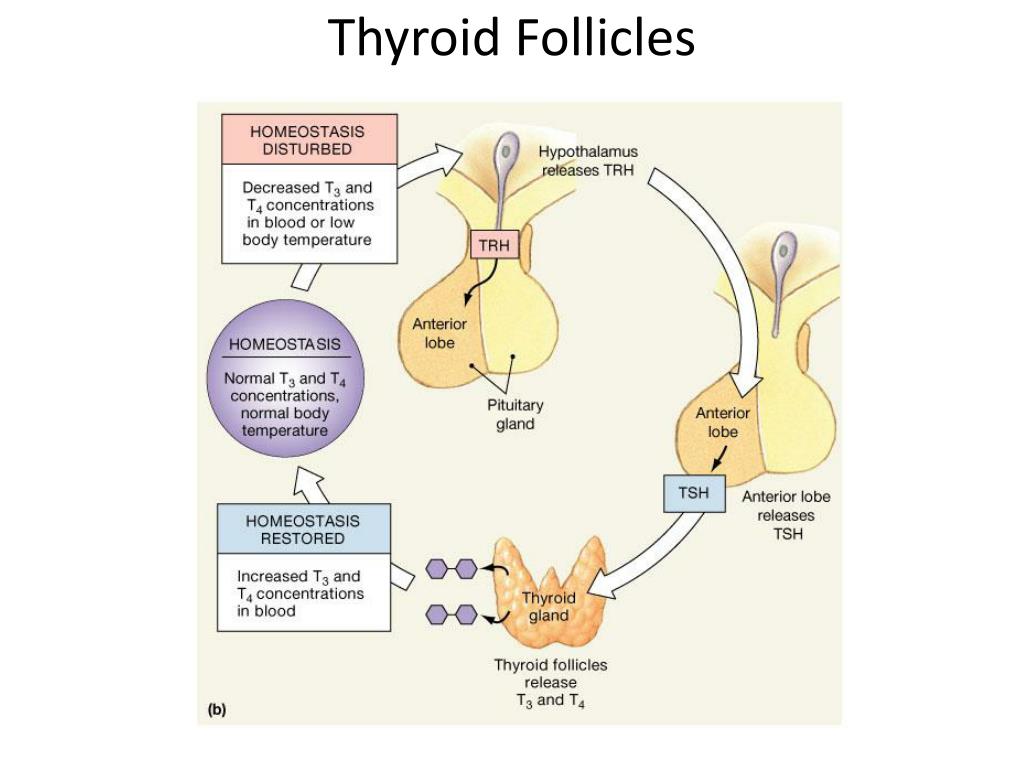
Technical info – how a signal of feeling cold, translates into heat generation in the body?
As soon as the skin senses cold, blood vessels shrink, and the sympathetic nerves send signal to hypothalamus. This causes shivering, and the brown fat surrounding blood vessels and key organs receive signal to activate their adrenaline receptors (norepinephrine). This results in fat burning (lipolysis) to release heat in the body. Thyroid hormones and the uncoupling protein (UCP1) rapidly activate by lipolysis and the cell mitochondria oxidation results in heat generation.
Thyroid and Diabetes
Have you noticed the feeling of slump after a meal?
That’s because carbohydrate metabolism and the resulting insulin acts as a switch to activate the enzyme responsible for body heat generation.
Fasting slows down the supply of thyroid hormones to avoid any fat burning in the body—a behavior similar to hypothyroidism.
In diabetes, the insulin resistance affects body’s ability to stay warm through heat generation from the process of burning brown fat tissues.
In animals that have thyroid dysfunction—and can not properly control the process of fat burning to generate heat—continuous eating is essential to keep them warm.
During extreme starvation, the body shuts down this heat producing mechanism. Similar slow down occurs in hibernation, which is also mediated by thyroid hormones.
Thyroid and Weight Loss
Thyroid hormones play a key role in controlling metabolism together with brain, white fat, brown fat, skeleton muscles, liver, and pancreas. That’s why they are considered potential paths to solve the metabolic disorders related to obesity, diabetes, and high cholesterol. A thyroid test is one of the first step to understand the underlying issues.
Low thyroid hormone levels are also associated with retaining water in the body. On treatment, release of this excess water results in weight loss (amount of fat generally remains the same).
Studies suggest hyperthyroidism increases craving for carbohydrates which returns to normal after treatment of high thyroid hormones levels./what-you-need-to-know-about-thyroid-storm-3232981_final-f6b75fd80c824233bced2cd5972526ce.jpg)
Interestingly, T3 is about ten-times more active than T4 in the body. That’s why it is seems to be more effective in weight loss and lowering cholesterol. However, no effect on insulin or cardiovascular health occurs.
A tiny gland in the throat has developed as a vital organ to maintain such a complex system of temperature control is truly an amazing feat of evolution.
References:
Thyroid Hormone Regulation of Metabolism by Mullur et. al., Physiological Reviews, Vol 92, Apr 2014.
Physiological importance and control of non-shivering facultative thermogenesis by J. Enrique Silva, Frontiers in Bioscience, S3, Jan 2011.
Relations of Thyroid Function to Body Weight: Cross-Sectional and Longitudinal Observations in a Community-Based Sample by Fox et. al., Archives of Internal Medicine, Vol 168, Mar 2008.
Mechanisms of thyroid hormone action by Gregory A Brent, The Journal of Clinical Investigation, Vol 122, Sep 2012.

Thyroid
Every fourth inhabitant of Moscow and the Moscow region is a potential patient of an endocrinologist. We live in an area with a low iodine content, which means that our “thyroid gland” has to work hard. From such work, it increases in size and, sometimes, very significantly. Its normal hormonal function may be disrupted. And to prevent this from happening, you just need to see a doctor on time.
Who knows their norm?!
Usually, nothing should be felt on the front of the neck. And if the thyroid gland is felt with your fingers, it is very likely that it is enlarged (unless, of course, what you felt is exactly the thyroid gland!)
The normal function of the thyroid gland is not felt in any way, but its violation can cause chronic fatigue, fatigue, even muscle weakness, if such a violation has gone far.
Whom to fear?
Symptoms of the “thyroid gland” disease can be not only weakness and lethargy, and sometimes even vice versa – excitability and irritability, seemingly unconditioned; or a temperature of 37. 0-37.5 without obvious other reasons. There may be nothing else besides an increase in temperature, and doctors tend to attribute such a temperature to endless acute respiratory infections (without cough and runny nose?!), “temperature tails” after infections, or even to the personality and structure of the patient’s nervous system.
0-37.5 without obvious other reasons. There may be nothing else besides an increase in temperature, and doctors tend to attribute such a temperature to endless acute respiratory infections (without cough and runny nose?!), “temperature tails” after infections, or even to the personality and structure of the patient’s nervous system.
See the enemy in the face
There are no “100%” symptoms. But everyone needs to remember at least that the thyroid gland is. That she might be sick. That there are more than a hundred diseases of the thyroid gland, but the lion’s share is caused by a lack of iodine in food. Insufficient function of the thyroid gland (hypothyroidism) is the cause of miscarriage, hypothyroidism is the cause of mental underdevelopment of children, poor school performance. (Of course, there are other reasons as well). But it should be remembered that memory and intelligence are directly dependent on the function of the thyroid gland.
Women and children
That’s who is most important not to miss the disease.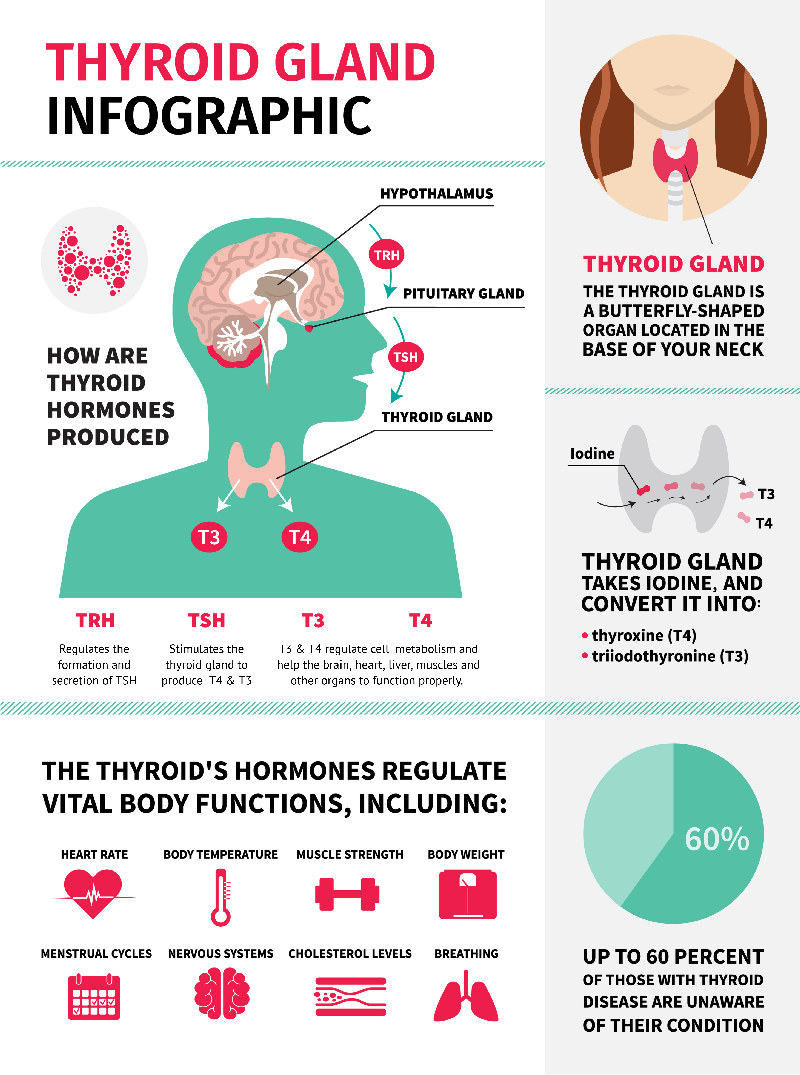 The function of the fetal brain depends on the state of the mother’s thyroid gland! Abilities and rates of development of the child too.
The function of the fetal brain depends on the state of the mother’s thyroid gland! Abilities and rates of development of the child too.
Poison?
Individuals suffering from atherosclerosis, hypertension and cardiac arrhythmias certainly need to be monitored. In the first two cases, because these diseases can arise or be aggravated by the pathology of the “thyroid”, and in the third, also because some antiarrhythmic drugs, say, cordarone, can harm the gland (especially with inadequate laboratory control of its work).
Until you get sick
Go to the doctor. And if there is no time yet, then do at least an ultrasound scan and take an analysis for hormones (TSH) and antibodies to thyroglobulin. These indicators will exclude the pathology of the thyroid gland (if everything is normal, of course). And if something is not right, then be sure to see a doctor. It is possible that other studies will be required to clarify the diagnosis. Such examinations are quite justified for healthy individuals, because thyroid diseases can be asymptomatic for many years, without manifesting themselves in any way, and not bother a person at all.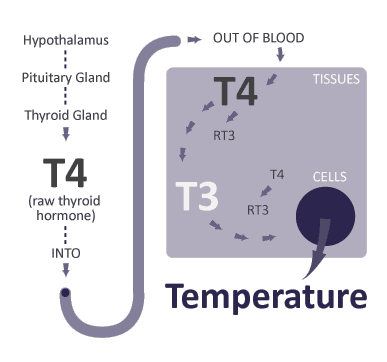 And identifying problems at an early stage is very important, because this will avoid so many complications!
And identifying problems at an early stage is very important, because this will avoid so many complications!
If you want to be healthy…
Of course, autoimmune inflammation of the thyroid gland, or its cancer, cannot be cured with iodine, but the most common disease – endemic goiter – is quite possible. You can also prevent it from happening. Taking potassium iodide at a dose of 100 micrograms per day for 3 to 6 months can radically improve the situation. Moscow and the Moscow region are zones of endemic goiter, 96% of the population have signs of iodine deficiency, which means that we are all recommended to eat iodized salt, and recently it has become possible to eat iodized bread and iodized butter. These products are both tasty and healthy.
Guys, let’s live together!
A lot of things can happen to the “thyroid gland”, and therefore – the doctor is your best adviser. All medicines (including iodomarin and potassium iodide) are best used for its intended purpose and under its strict guidance.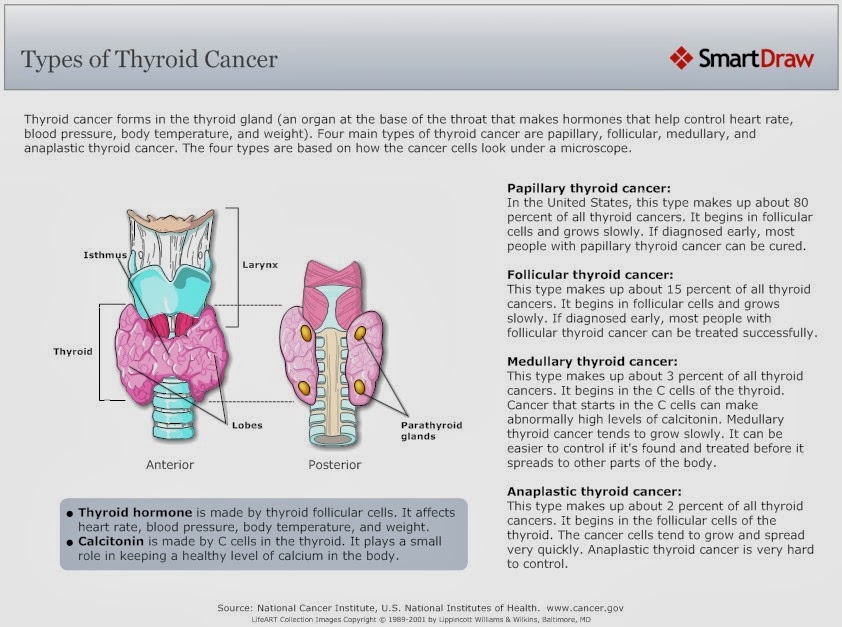 In addition, most thyroid diseases, with adequate treatment, end in recovery! Think about how many diseases we can cure?
In addition, most thyroid diseases, with adequate treatment, end in recovery! Think about how many diseases we can cure?
Skin and thyroid
Home / Articles / Skin and thyroid
The skin serves as a border organ, accounting for 1/6 – 1/7 of the volume of the entire human body and is, in fact, one of the largest organs. Among the numerous functions of the skin, one should single out its barrier, thermoregulatory, detoxification, immune, vitamin synthesizing (in relation to provitamin D), respiratory (1% of total gas exchange), enzymatic, excretory functions. A special place is occupied by the function of the skin as a blood depot: its vessels can hold up to 1 liter of blood.
Man cannot exist without skin. That is why in the days of obscurantism, the most terrible execution was considered to be the deprivation of a person’s skin. A striking example of the involvement of the skin in the pathology of the body can serve as diseases of the thyroid gland
Increased production of thyroid hormones will be observed in hyperthyroidism. One of the important symptoms of the disease is subfebrile temperature (37.1-37.3ºС), when patients constantly experience a feeling of heat. Reduced production of hormones is accompanied by a decrease in basal metabolism and, as a rule, low body temperature (often below 36-35.5ºС), patients are constantly chilly, even in hot weather, put on warm socks at night or sleep under two or three blankets. If a person, for no apparent external reason, began to wear warm socks at night, it is time for him to go to an endocrinologist.
One of the important symptoms of the disease is subfebrile temperature (37.1-37.3ºС), when patients constantly experience a feeling of heat. Reduced production of hormones is accompanied by a decrease in basal metabolism and, as a rule, low body temperature (often below 36-35.5ºС), patients are constantly chilly, even in hot weather, put on warm socks at night or sleep under two or three blankets. If a person, for no apparent external reason, began to wear warm socks at night, it is time for him to go to an endocrinologist.
The skin radiates heat and has the ability to perspire. Evaporation of water and, in particular, sweat, is accompanied by a loss of heat. That’s why with increased production of thyroid hormones – hot, damp skin and pouring sweats that allow the body to not overheat. With reduced thyroid function, patients sweat badly or do not sweat (even in the sauna), their skin is dry, rough, sweating is disturbed. Therefore, they avoid high temperatures, since overheating of the body can result in heat stroke and even death.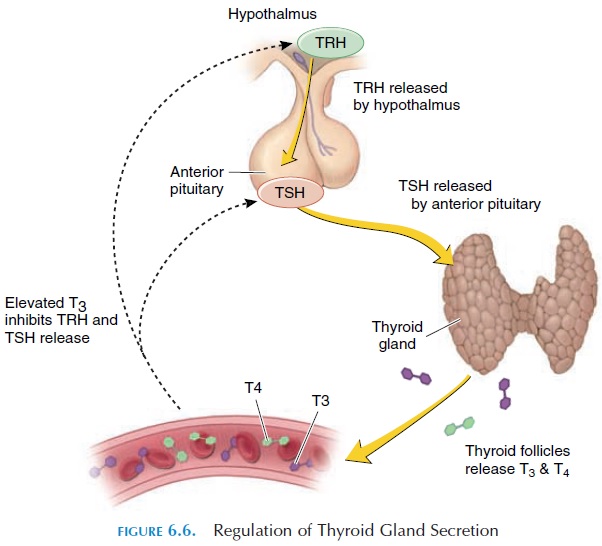
With thyrotoxicosis (Graves’ disease), increased sweating is common. The skin is hot to the touch, smooth, velvety, damp with sweat and resembles the skin of newborns, even if it occurs at a respectable age. The palms are always hot and moist, there is a small tremor of the fingers of outstretched hands. The palms and face are red. Often there is exophthalmos (bad eyes). Hair becomes thin, soft and oily. Often there is diffuse hair loss. Very characteristic is the separation of the nail from the nail bed, which usually begins with the ring finger. In severe cases, hyperpigmentation is observed on the skin, especially around the eyes.
Graves’ disease In about 1% of cases, it may be accompanied by deformity of the long bones and distal phalanges of the fingers. The fingers take on the appearance of “drumsticks”, and the nails – “watch glasses”.
But the skin changes especially brightly when the function of the thyroid gland is reduced – myxedema. Changes begin on the part of the skin of the face, the forehead, eyelids, nose, cheeks swell.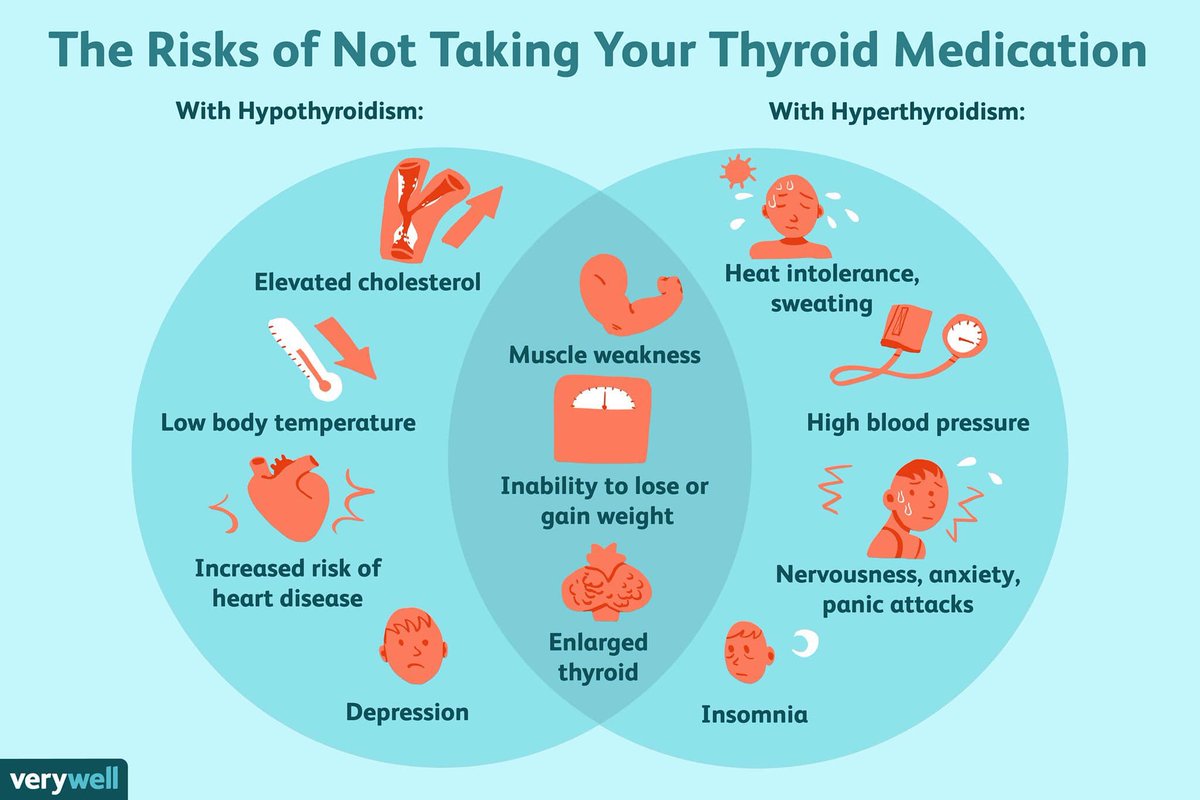 The eye slit becomes narrow. Lips and nose sometimes bluish. There is a blush on the cheeks, like made-up dolls, in contrast to the pale color of the rest of the face. Facial features are smoothed out, facial expressions are obscured. This peculiar puffiness, under pressure on which no fossa remains, gradually spreads downwards to the neck, the head becomes less agile. The supraclavicular fossae are filled with a dense mass of fat. Edema may cover the entire body. The skin is cold to the touch. Patients constantly complain of chilliness. The skin is especially dry and flaky. Sweat glands atrophy, sweating disappears. Hair falls noticeably on the head and on other parts of the body. Characterized by loss of the outer sections of the eyebrows, eyelashes, mustache, beard. Hair dry, brittle, lose their shine. Nails are brittle, lose, like hair, their luster. Almost all patients have less or more frequent bites of the mucous membranes of the cheeks, less often of the lips and tongue.
The eye slit becomes narrow. Lips and nose sometimes bluish. There is a blush on the cheeks, like made-up dolls, in contrast to the pale color of the rest of the face. Facial features are smoothed out, facial expressions are obscured. This peculiar puffiness, under pressure on which no fossa remains, gradually spreads downwards to the neck, the head becomes less agile. The supraclavicular fossae are filled with a dense mass of fat. Edema may cover the entire body. The skin is cold to the touch. Patients constantly complain of chilliness. The skin is especially dry and flaky. Sweat glands atrophy, sweating disappears. Hair falls noticeably on the head and on other parts of the body. Characterized by loss of the outer sections of the eyebrows, eyelashes, mustache, beard. Hair dry, brittle, lose their shine. Nails are brittle, lose, like hair, their luster. Almost all patients have less or more frequent bites of the mucous membranes of the cheeks, less often of the lips and tongue.
The general impression of the face is that it is old-fashioned.

